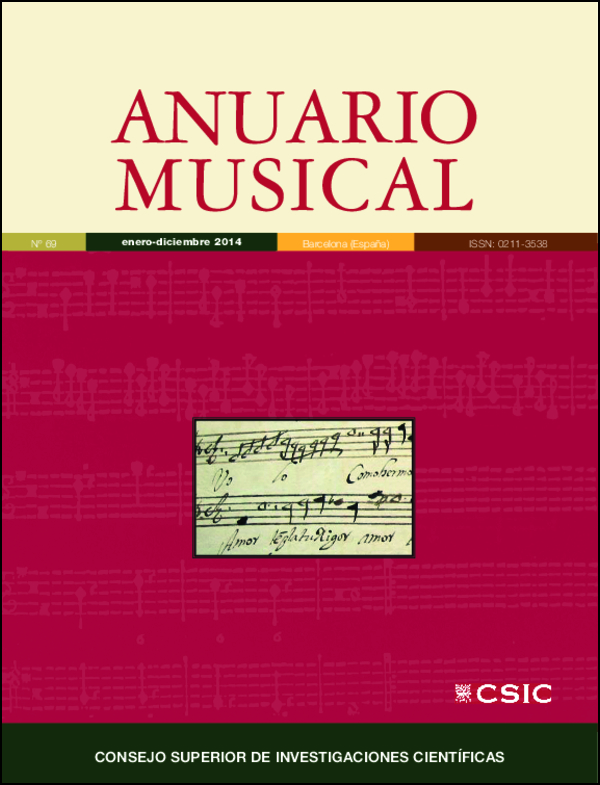The Libro di ricercate a qvattro voci (1575) by Rocco Rodio and some remarks on the relationship between Naples and Spain in the sixteenth century
DOI:
https://doi.org/10.3989/anuariomusical.2014.69.164Keywords:
Rocco Rodio, Keyboard, Neaples, Spain, Score, AnalysisAbstract
After a brief setup on musicological studies on the relationships between Naples and Spain, in particular in the keyboard production of the sixteenth and seventeenth centuries, this paper occupies almost exclusively - on analysis and style - on the LIBRO DI RICERCATE A QVATTRO VOCI DI ROCCO RODIO CON ALCVNE FANTASIE SOPRA VARII CANTI FERMI, published in Naples by Gioseppe Cacchio dall’Aquila in 1575. The book by Rocco Rodio (“Rocchus Rodius Civitatis Barensis”; Bari-Napoli 1530ca, 1615ca ) is the fi rst release ever appeared in score, which was particularly followed in Naples in the late sixteenth and early seventeenth century and of which we find significant use in Italy and Europe throughout the course of the seventeenth century, with examples also in the eighteenth century. The analysis of form and style of the compositions contained in this printing shows the ‘Modern’ and progressive author’s writing, which seems refractory to the contemporary practice of improvisation and ‘diminutions’ that was practiced in the polyphonic motet and madrigale affettuoso; the fantasies are a superb example of invention and mastery of composition to be read not only in the flow of tradition practiced on the harpsichord, but should be understood as the exemplary model resulted in the broader vocal, didactic and experimental literature of the polyphonic instrumental schools in Naples, Rome and Spain.
Downloads
Downloads
Published
How to Cite
Issue
Section
License
Copyright (c) 2014 Consejo Superior de Investigaciones Científicas (CSIC)

This work is licensed under a Creative Commons Attribution 4.0 International License.
© CSIC. Manuscripts published in both the print and online versions of this journal are the property of the Consejo Superior de Investigaciones Científicas, and quoting this source is a requirement for any partial or full reproduction.
All contents of this electronic edition, except where otherwise noted, are distributed under a Creative Commons Attribution 4.0 International (CC BY 4.0) licence. You may read the basic information and the legal text of the licence. The indication of the CC BY 4.0 licence must be expressly stated in this way when necessary.
Self-archiving in repositories, personal webpages or similar, of any version other than the final version of the work produced by the publisher, is not allowed.














